June 15, 2023
The Cloud Scientists
The ISTA scientists Yi-Ling Hwong and Andrea Stoellner are cloud scientists
In collaboration with C/O Vienna Magazine by David Meran, concept by Antje Mayer-Salvi, images by NASA, Mia Meus

Heaven and Heights
The scientists Yi-Ling Hwong and Andrea Stoellner are cloud scientists. They are studying clouds at the Institute of Science and Technology Austria (ISTA) in Klosterneuburg near Vienna. Tons of water circulate in these flying, heavy giants. Their volatility and instability coupled with the real fear of thunderstorms are since time immemorial material for interpretations. The fact that they have a weighty climate-political dimension makes them more interesting to us than ever.
David Meran: Have you looked at the sky professionally today?
Yi-Ling Hwong & Andrea Stoellner: Unfortunately, our research is not as romantic as one might think (laugh). We rarely look at the sky above us, but rather at the screens of our computers, which we use to create cloud models. Sometimes we play with a laser in a darkened laboratory.
A cloud is a collection of very fine water droplets, ice crystals, and particles in the atmosphere. Clouds form whenever the water vapor becomes supersaturated or—to put it another way—the humidity exceeds a hundred percent. So far, so complicated. Explain to me very, very simply: What are clouds?
A.: They are a large collection of very many small droplets, all floating in the sky. Here you can already see the difference between Yi-Ling and me. She deals with cloud dynamics, the large scales. For me, it’s about the small stuff, the microphysics of clouds.
Y.: I look at clouds from a scientific point of view, but I also find their social aspect interesting. On a personal level, clouds excited me since I was a little girl. I loved to watch them. Clouds just look cool, especially when you watch them from an airplane. Then I would love to be able to jump around on them. Since I’ve been analyzing clouds scientifically, I’ve been asking myself what clouds can do, what they do, and how they affect our climate.
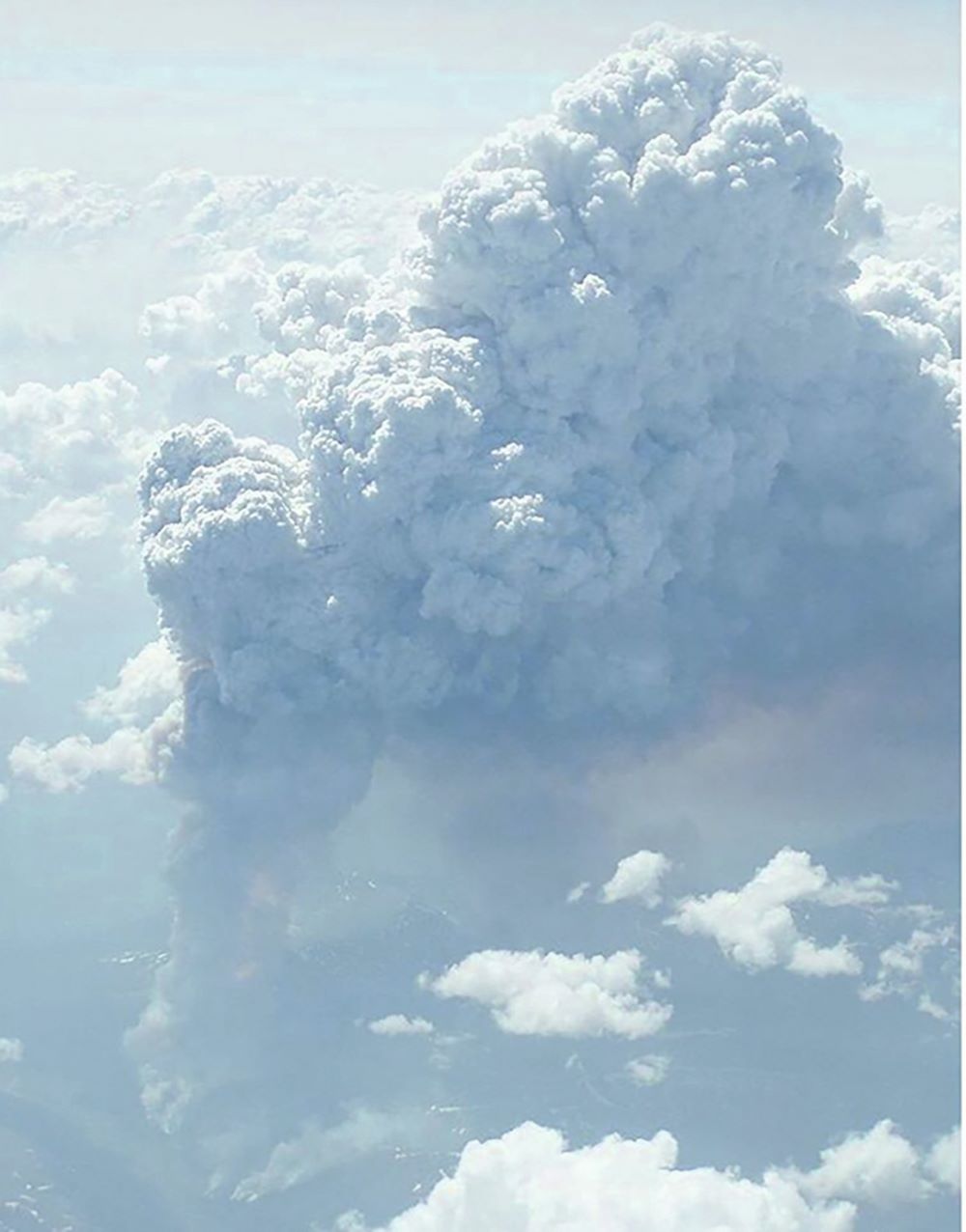
How so?
Y.: In short, low clouds reflect the sun and are good for the climate because they cool the planet. Higher clouds, on the other hand, are rather bad because they trap heat. As a result, heat can’t easily rise into space. Similar to a thick comforter that keeps the heat in the bed.
Clouds are flying water reservoirs in the atmosphere, with around 15 trillion tons of water circulating in them—that’s three hundred times the volume of Lake Constance. Gigantic. What is the lifetime of a cloud, how big and heavy can they become?
Y.: The most common large clouds are so-called cumulonimbus clouds. These are thunderclouds that can extend vertically up to twenty kilometers in height, with a width of one to two kilometers. They can weigh several million tons. The lifetime of a cloud could almost be considered philosophical: When a cloud becomes water, in the form of rain, that water eventually becomes cloud again through evaporation. After circulation happens all the time, you could say it’s always the same cloud, it exists forever.
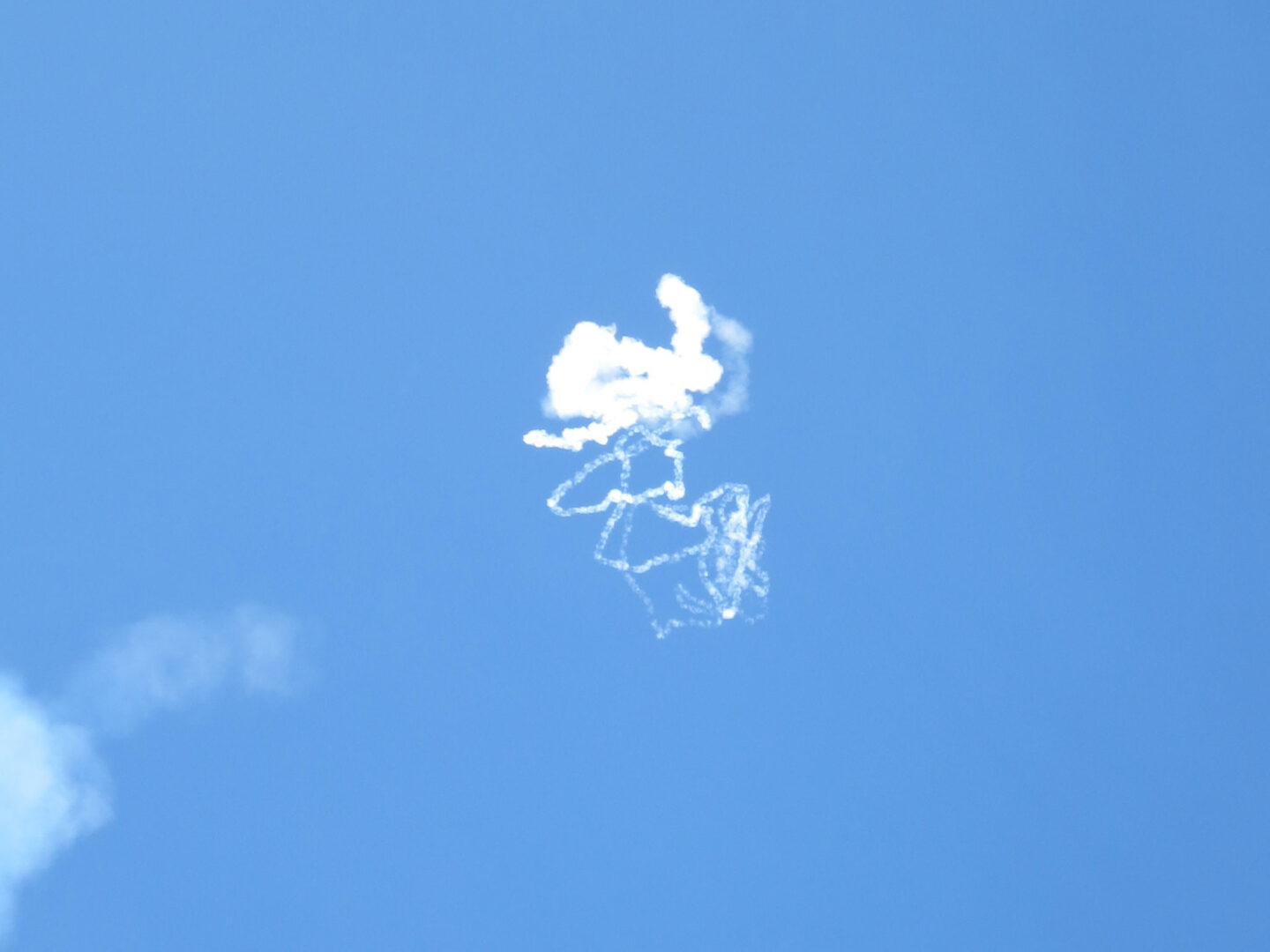
Why do some stay longer, some are only there for seconds?
A.: We see the different lifetimes of clouds in the contrails of airplanes. Some remain visible in the sky for minutes, others seem to fizzle out immediately. This is related to the air and the condition of the day. If there is already a lot of moisture in the air, the contrails stay longer, if the air is rather dry, they evaporate immediately. So, by observing contrails, we can deduce some physical conditions of the day.
What don’t we know about clouds or climate?
A.: Unfortunately, a lot. People have probably always been afraid of lightning and wondered how it occurs. There are many different theories, but we don’t know exactly.
In school, you learn how lightning is created, don’t you? I remember the separation of positive and negative charges inside a cloud when water drops collide with ice grains.
A.: The big problem with school is, you are given the idea there that science always provides clear answers, but actually it provides more questions than answers. For example, we know from climate simulations that global warming will cause a lot of water to collect in clouds in the future, because warmer temperatures cause more water to evaporate. Whether, how and when it will come back down is still unclear.
So we know little about clouds?
Y.: Much less than we think! The more we both dive into cloud and climate research, the more questions we ask ourselves. As the planet warms, will we have more low clouds or more higher clouds, and how do they grow? How do they organize and connect? Those are the burning questions for me.
Okay, let’s summarize: we know little. What we do know is that clouds are strange, elusive entities made of water, air, and tiny particles against which light refracts. They have triggered emotions in us humans since time immemorial and are subjects for projections for many things. They serve as a symbol for freedom, religious redemption, the afterlife and the divine, the eternally changing and transient. The ancient peoples, the ancient Greeks, Goethe, artists of all epochs were and are fascinated by clouds. What do clouds trigger in you emotionally?
A.: A feeling of greatness and vastness! In everyday life I often get lost in the small things, but when I look at the sky, they seem small in the face of this mysterious, different, fascinating world. I don’t mean this in a religious sense. When you look at the sky and the clouds, it broadens your perspective.
Y.: The mysteriousness of clouds simply arouses curiosity in me. One never knows exactly what clouds bring to us. They are like people, have different sizes, shapes, are mysterious, unpredictable, dangerous, beautiful or playful—in short, multi-layered.
Did clouds actually look the same 2000 years ago as they do today?
A.: No idea. One idea would be that they are whiter today than they were then. We currently have a lot of pollution with many small particles in the air, so there are many small rain droplets that make a cloud whiter. That would be a quick, unscientific thesis of mine (laughs)! Clouds were not systematically studied until the early 19th century. They were classified and given names.
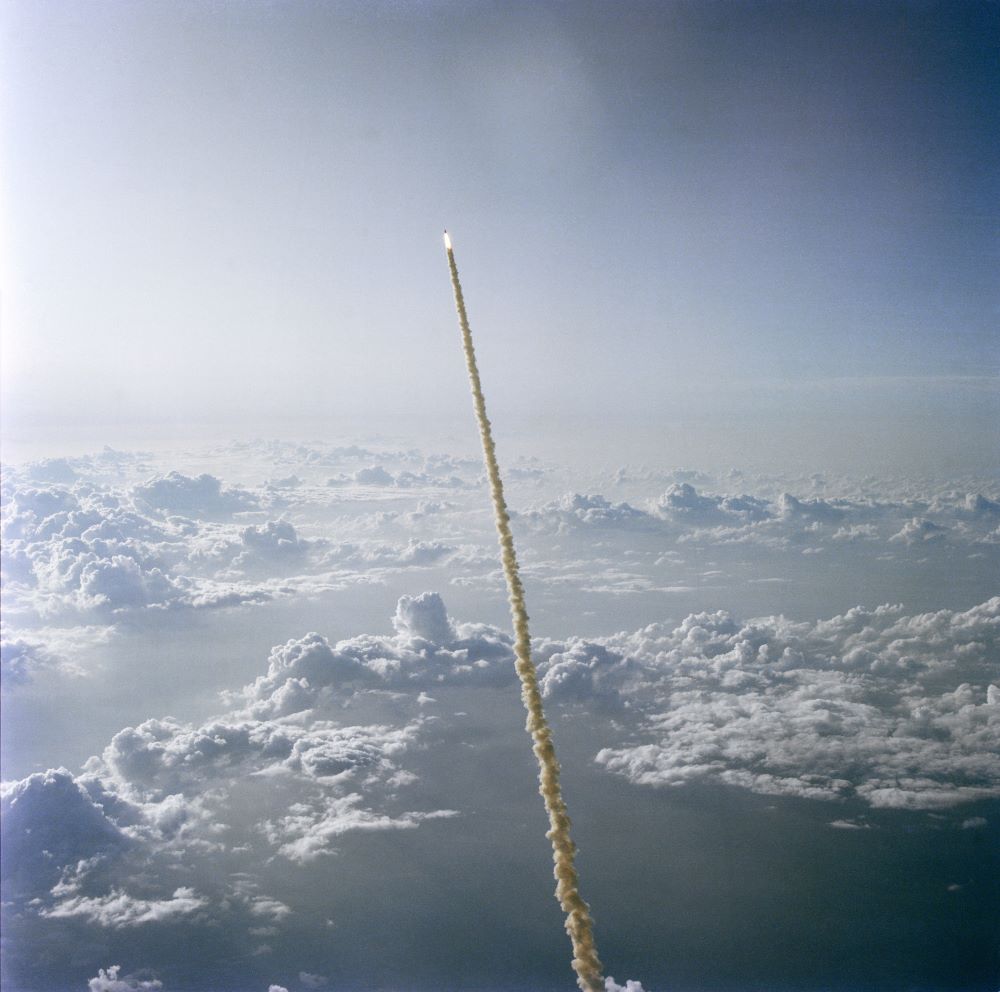
How did two young female scientists come up with the idea of studying clouds?
Y.: By chance! I originally didn’t plan to work scientifically on clouds. I was studying in Australia, among other places. My professor at the time, Steven Sherwood, was and is really a luminary in the field of climate research. He was concerned with clouds because they represent the greatest uncertainties in climate models. That appealed to my inquiring mind. Today, my greatest goal would be to simulate climate models as accurately and correctly as possible. I am on fire for this topic!
Why did you focus on aerosol physics, Andrea?
A.: Because it’s not about inventing the next quantum computer, but about researching a natural phenomenon. By the way, my first lecture in this subject was given by a female professor. She was the only female lecturer in physics at my institute that I met in the six years of my studies! Somehow it made a difference to me to have the material taught by a woman.
A female role model in a very male-dominated physics?
A.: The other day I was at an aerosol conference. Surprisingly, in this field of physics, the percentage of women is much higher than in the others. It’s exciting, I don’t know why, but maybe it’s some kind of feedback loop: I guess we female aerosol physicists motivate each other and infect other female colleagues with our enthusiasm.
How do you research clouds? What does a cloud researcher’s everyday life look like? Do you breed them, do you catch them?
A.: My experiments are not classical experiments of cloud physics, but they are applicable to it. I have a special “toy”, my laser beam. This is split by various mirrors and lenses so that it is split into two beams superimposed and re-combined on a point in the middle. In this focal point, where the two laser beams meet, they can hold something, more precisely a micrometer, that is, a particle 0.001 millimeters small.
Sounds amazing, but what does “hold on” mean?
A.: There are countless particles flying around extremely fast in the air. It’s similar in clouds, but we can’t hold on to these very small particles, let alone see them. My laser method is called “optical tweezers”. That’s exactly how you can think of it: The laser holds the particle with light only, so nothing material touches the particle. Under simple lenses to special microscopes, I can then examine it. My research question is trying to find out how these particles become electrically charged when water condenses or evaporates on them.
What happens in your laboratory on a small scale also happens on a large scale in the cloud?
A.: Exactly, in some cases a lot of charge is generated in the clouds, which then leads to lightning. Basically, we do know: When ice collides with snow, charge is exchanged. But nobody knows exactly why this happens, or even more generally, why so much charge can develop in a cloud in the first place. Whether my current doctoral thesis confirms exactly this effect, I cannot yet say.
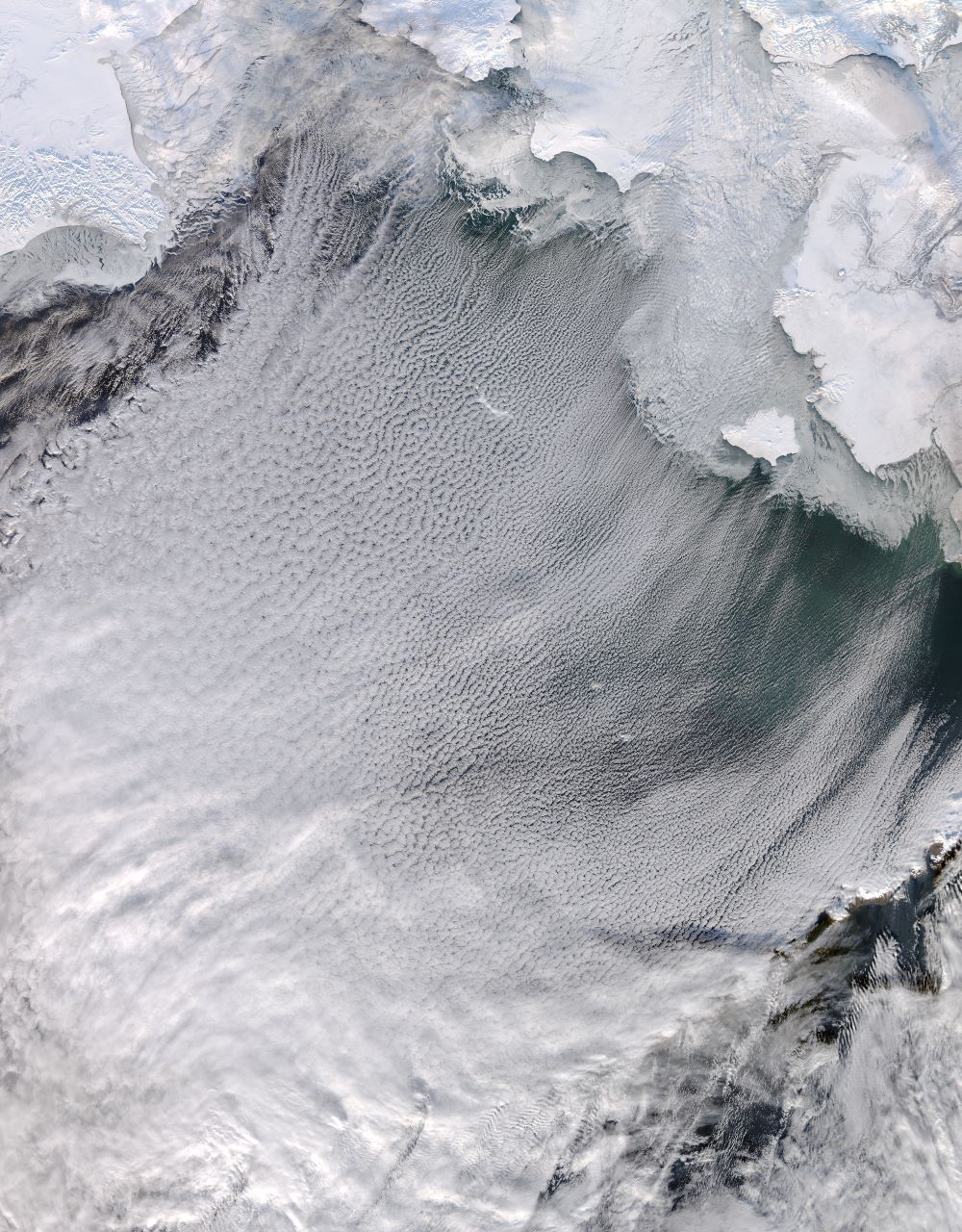
Yi-Ling, you create computer simulations in which countless data are fed in and processed to study the behavior of the climate?
Y.: Yes, for that I use cloud servers to study “clouds”, which seems almost a poetic connection (laughs). I develop and program algorithms to represent clouds and cloud formations, and observe how they affect our climate as the Earth warms or cools. Central to this appears to be the interconnectedness of clouds. There are many individual clouds, but they want to hang out together. Basically like humans and herd animals that want to live together in a social structure.
What happens when clouds influence each other or even connect?
Y.: In recent years, we have come up with the following: Depending on how densely clouds are connected, it has a massive impact on our weather. The denser, the more extreme the rain, and this, as we know, can cause a lot of damage, in the form of flooding, for example. That’s one reason why we want to find out the mechanisms behind it. I still have a lot to do!
What are your favorite clouds?
Y.: I love a cloud phenomenon called “fallstreak” or “hole in the sky”, a special class called “cavum” (Latin for “cave, hole”). It appears rarely and impresses me very much. In the hole are many very cold particles, below the freezing point, but for reasons still unclear, not yet frozen. If ice crystals from higher layers of air now fall into the supercooled cloud, the water droplets quickly freeze to the ice crystals. We don’t know exactly why, but through this chain reaction we can observe this phenomenon. Fascinating!
A.: My favorites are called “lenticularis” (Latin for “lens-shaped”). They look like little lentils. Often they hang on mountain tops and resemble a hat! Not to forget the so-called “Morning Glory” or “Roll-Clouds”, also visually very attractive. In our research, however, we do not deal with them.
Clouds have remained enigmatic to this day, and a major cause of fuzziness in the analysis and forecasts for our weather and climate. Where do we reach our scientific limits in understanding clouds?
A.: There are numerous limits. Cloud scientists and ocean scientists, for example, both share a dilemma: If you take a “sample” from the ocean or from the air, for example, and bring it to the surface of the Earth to study, it changes.
What exactly do you mean by samples?
A.: We refer to water or air samples as “samples”.
So you pack up the clouds and take them with you?
A.: Exactly. Unfortunately, the air pressure and temperature at ground level are different from those in the upper layers of air, so the samples are distorted. So the best method would be to examine the samples directly in the air. This is very difficult, sometimes even dangerous, but it is done. My former professor sometimes gets into an airplane with a laboratory on board and flies through a forest fire, for example, to investigate the particles in the air directly up there.
Which clouds should you be afraid of?
Y.: None at all! Of course, there are dark thunderclouds that can be dangerous for people, then you have to seek shelter, but basically we shouldn’t be afraid of clouds.
A.: Of those on the Internet (laughs)!
Speaking of which, what does an IT cloud have in common with a real cloud?
Y.: The biggest thing they have in common is that they are connected. In climate research, we use enormously large servers that are interconnected, just as clouds are interconnected. My research would not be feasible without clouds, because for my cloud models I need an incredible amount of storage space to process the data. Climate research has one of the largest computing power requirements ever! We would need a gigantic quantum computer, currently we can unfortunately only fall back on a limited computer performance.
The condensation trails of airplanes, which can be seen in the sky, are now officially defined as cloud form: After 30 years, the World Meteorological Organization (WMO) recently published a new edition of its “Cloud Atlas”. Twelve cloud phenomena have been newly included, including the very stripes that jets leave in the sky. People who believe in “chemtrails”, i.e. the alleged targeted and concealed spraying of chemicals during flights, see this as another building block in their conspiracy theory. Why are they clouds?
A.: One should distinguish very carefully between “chemtrails” or “contrails”—the latter is the technical term. An airplane leaves condensation, that is, it happens condensation of water that was present in the atmosphere. Thus, “contrails” have the same physical properties as any other cloud. Ultimately, they are clouds. When it’s cold in the winter and you exhale warm air, nothing happens but condensation, a small cloud is formed when we exhale. Many things can be clouds. The term “chemtrails” was invented by conspiracy believers.
Why are clouds of crucial importance for our climate?
Y.: How clouds connect and structure themselves has a huge impact on our weather phenomena, especially on the intensity and strength of rain. When clouds are very close together, the rainfall is heavier. The side effect is that the more closely they are connected, the more our planet warms up. This in turn has an influence on the rain: When it’s warm, the cloud can hold more water vapor, that’s a law of physics. In short, the more vapor, the more extreme the precipitation.
What are the forecasts?
Y.: We don’t know yet what will happen if temperatures rise by two degrees. Will clouds then be tighter or looser together? Our programmed climate models are not yet giving consistent results. It looks a little bit like they will be more tightly knit, which would not be good for us humans, because that means a lot or too much rain.
Are clouds in danger of extinction?
Y.: No, as long as there is water vapor, clouds exist. If there is no more water, we die anyway.
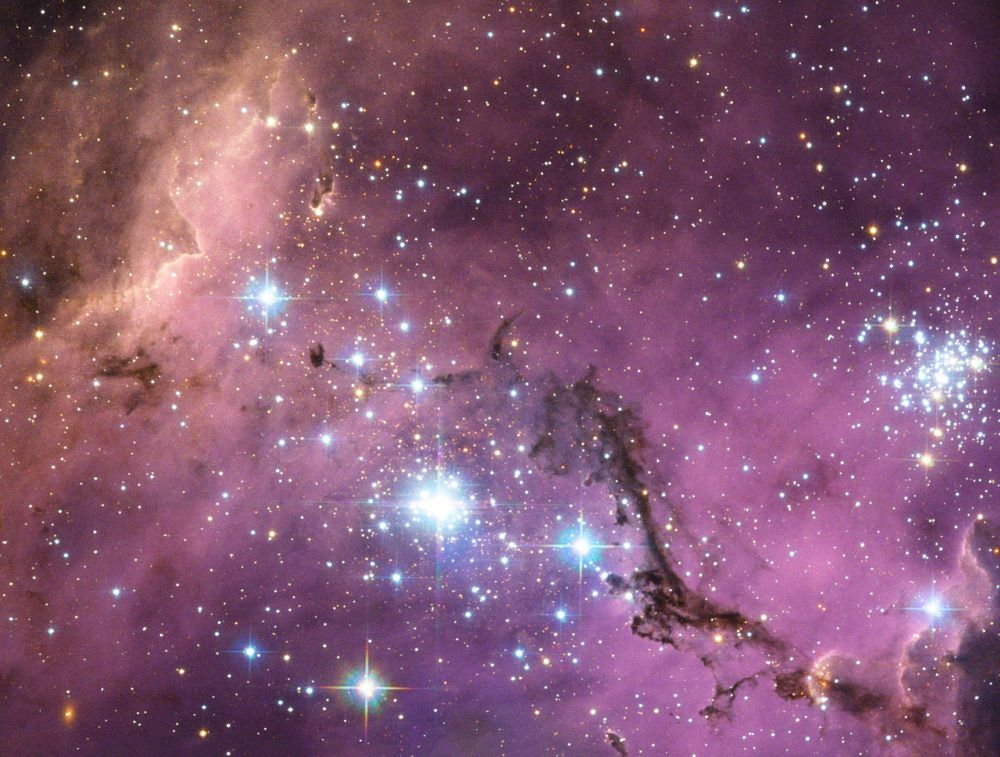
A few years ago, the Danish physicist Henrik Svensmark attracted attention. His thesis is that cosmic radiation influences cloud formation. This means that we humans are not solely responsible for the greenhouse effect, but that the cosmos is as well. Can I take off my tinfoil hat again or is there something to it?
A.: At the Swiss research center CERN there is the fascinating experiment “CLOUD”. It artificially creates clouds in a large chamber! There have also been many experiments with cosmic rays there.
How exciting! What did they find out?
A.: There is indeed a connection between cosmic rays and cloud formation, but it’s not very big. The main cause of climate change is man, not the cosmos.
Y.: My climate models also deal with the link between cosmic rays and clouds, but they show: Global warming follows CO2 increase. That has been proven.
Are clouds therefore political?
Y.: Humans certainly instrumentalize them for their own agendas. Clouds are a collective topic, everybody knows them, everybody sees them. Their unpredictability makes them ideal projection surfaces.
What do you think about geoengineering?
A.: In geoengineering, various complex methods and technologies are used to deliberately change the climate system. For example, people want to artificially produce clouds or spread sulfur particles in the stratosphere to mitigate various consequences of climate change. The idea of producing more clouds sounds good at first, but it could be politicized. Who produces them, who pays, and where are the clouds “made”? Which countries can even afford it, and where do the clouds then release their water in the form of rain? This, by the way, is called cloud seeding, or controlled rainfall.
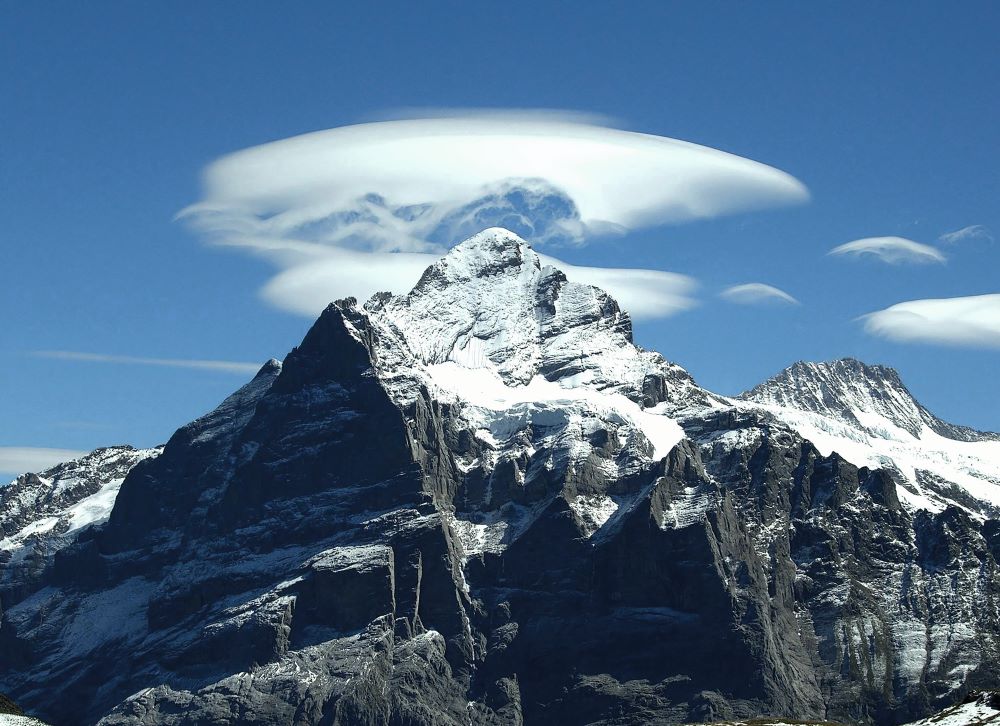
Do we need to protect our clouds?
Y.: I think we humans love clouds. A blue sky with white clouds creates a feeling of happiness, the fascination for the sky and clouds is probably in our genes. But if we don’t protect our environment and pollute even more, we won’t be able to see a blue sky with white clouds in the future. In this sense, simply put, we must do everything we can to still be able to see them in the future. This can only be achieved if we stop CO2 emissions.
In the logic of the capitalist optimization society, we ourselves are to blame for climate change and are now responsible for not eating meat, flying less or not at all, and living more sustainably. Do you share this assessment? Explain to us with your scientific background: how to live a good life?
A.&Y.: The bottom line is that aviation only causes up to three percent of all CO2 emissions. The biggest CO2 emitters are close to a hundred companies in the world, which are responsible for 70.57 percent of CO2 emissions globally. What we can do as individuals is come together to form some kind of movement that makes demands! It’s the masses that do it.
Can we humans still save the world?
A.&Y.: In terms of communication on the climate So we emphasize that really great things are emerging right now: Eco-initiatives are fighting for a better environment all over the world, countless communities are joining forces, more and more parts of agriculture are becoming more ecological, and so on. All of this gives us hope to continue with our research.
Thank you for the interview.
This article was written in cooperation with the Institute of Science and Technology Austria (ISTA).
29-year-old Andrea Stoellner, a native of Upper Austria, studied physics at the University of Vienna and is currently a PhD student at ISTA in Klosterneuburg. Besides her scientific career she produces and curates music for the Freisound-Festival.
Yi-Ling Hwong was born in Malaysia and received her PhD from the University of New South Wales in Sydney, Australia. She also completed a Master in Engineering Sciences in Karlsruhe, Germany, and was one of the engineers involved in the Compact Muon Solenoid Experiment of the Large Hadron Collider Project at CERN. She is currently a Postdoc in the Muller Group at the Institute of Science and Technology Austria.





